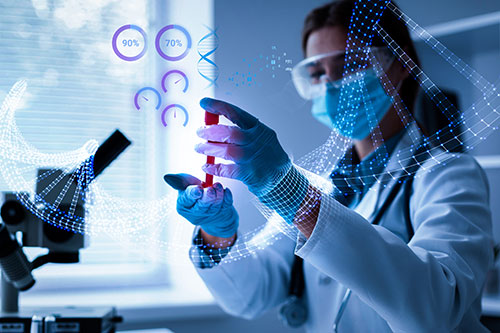
Drug Discovery Process
The development of life-saving medications is a journey marked by dedication, ingenuity, and perseverance. At the heart of this journey lies the intricate process of drug discovery, where scientists embark on a quest to unlock the mysteries of biology and chemistry to find new treatments for diseases. Join us as we delve into the captivating world of drug discovery, unraveling its stages and unveiling the remarkable feats of scientific innovation that pave the way for medical breakthroughs.
Understanding Drug Discovery: Drug discovery is a multifaceted endeavor that involves a meticulous sequence of steps aimed at identifying, designing, and developing therapeutic compounds to target specific diseases. It is a collaborative effort that brings together experts from various disciplines, including biology, chemistry, pharmacology, and computational science, each contributing their unique insights and expertise.
Exploring the Stages: The drug discovery process can be broadly divided into several key stages, each presenting its own set of challenges and opportunities:
1. Target Identification and Validation:
- The journey begins with the identification of a molecular target, such as a protein or enzyme, that plays a key role in a disease process.
- Scientists use cutting-edge technologies and computational tools to validate the target's relevance and potential as a therapeutic intervention point.
2. Hit Discovery and Lead Optimization:
- With the target in sight, researchers embark on a quest to identify molecules, known as "hits," that have the potential to modulate the target's activity.
- High-throughput screening techniques, virtual screening algorithms, and natural product libraries are employed to identify promising lead compounds.
- These lead compounds undergo extensive optimization through medicinal chemistry techniques to enhance their potency, selectivity, and pharmacokinetic properties.
3. Preclinical Development:
- Once lead compounds with favorable properties are identified, they undergo rigorous preclinical testing to evaluate their safety, efficacy, and pharmacological profile.
- Animal studies and in vitro assays are conducted to assess the compound's pharmacodynamic and toxicological properties, providing crucial insights for further development.
4. Clinical Trials:
- Upon successful completion of preclinical studies, promising drug candidates progress to clinical trials, where their safety and efficacy are evaluated in human subjects.
- Clinical trials are conducted in multiple phases, each designed to address specific research questions and regulatory requirements.
- Phase I trials focus on safety and dosage, Phase II trials assess efficacy and side effects in a larger patient population, and Phase III trials evaluate the drug's overall benefits and risks in comparison to existing treatments.
5. Regulatory Approval and Market Access:
- Following the successful completion of clinical trials, the drug candidate undergoes regulatory review by health authorities, such as the Food and Drug Administration (FDA) in the United States or the European Medicines Agency (EMA) in Europe.
- Regulatory agencies meticulously assess the safety, efficacy, and quality of the drug, ensuring that it meets stringent standards for approval.
- Upon approval, the drug is granted market access, allowing patients to benefit from the new treatment option.
Conclusion: The journey from initial discovery to market approval is a testament to the collective efforts of scientists, researchers, and healthcare professionals who tirelessly strive to advance medical science and improve patient care. The drug discovery process represents a remarkable fusion of creativity, innovation, and perseverance, offering hope for millions of individuals affected by debilitating diseases. As we continue to push the boundaries of scientific knowledge, let us celebrate the spirit of discovery that fuels our quest for a healthier, brighter future.




